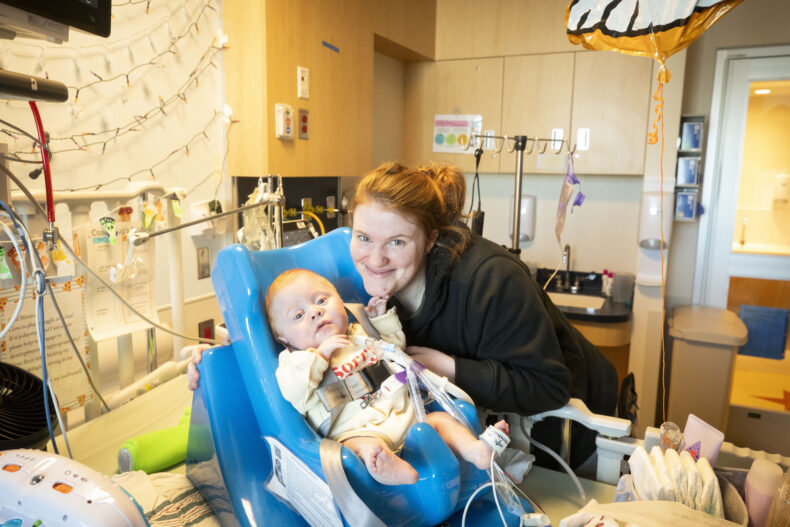For more than two decades, evidence has accrued that the use of volume-targeted ventilation (VTV) results in better outcomes in neonates who require mechanical ventilation in the Neonatal Intensive Care Unit (NICU).
But the use of this particular type of mechanical ventilation has been seriously underused in NICUs in the United States and Canada.

The quandary led Dupree Hatch, MD, MPH, assistant professor of Pediatrics in the Division of Neonatology at Monroe Carell Jr. Children’s Hospital at Vanderbilt, to figure out the reasons for this underuse and how to increase utilization in the NICUs at Vanderbilt.
“Increasing Volume-Targeted Ventilation Use in the NICU,” published in Pediatrics, is the first report to describe the use of quality improvement interventions to increase the use of VTV in mechanically ventilated NICU patients.
According to the report, the use of VTV results in lower rates of bronchopulmonary dysplasia, a common result of prematurity, compared with the more commonly used pressure-limited ventilation.
Bronchopulmonary dysplasia has been linked to neurodevelopmental impairment, longer lengths of stay in the NICU, higher rates of readmission, and higher health care use in the first years of life.
Interested in lowering the rate of adverse pulmonary and neurologic outcomes in preterm babies in the Children’s Hospital NICUs, Hatch began paying closer attention to the life-saving machinery.
It all came down to the home screen.
“Basically, technical issues were one of the main reasons for lower use,” said Hatch. “After watching how clinicians worked, we made very subtle changes to the screen and made sure that all of the information we needed to make the best decisions for our patients was easily accessible.
“Removing the technical barriers and manipulating the ventilator interface screens (how we chose which modes to use) made the screen much easier to navigate, resulting in a greater use of this particular form of mechanical ventilation,” he said. “Coupled with various educational platforms and building local awareness, we were able to standardize our practice for the better.”
Hatch reports that after the first interventions, the weekly use of VTV increased from 25% to 66%. Additional improvements to the process led to nearly 99 percent use.
Optimizing the technical aspects of the screen and educating users on the evidence of improved outcomes resulted in higher use and capability, said Hatch.
While local use of VTV has improved, there is still a large gap nationally in the use of VTV mode in the NICU setting. Hatch acknowledges that his team’s ability to address the technical barriers to VTV proved useful at Children’s Hospital, but not all NICUs utilize the same machinery and might need to implement quality improvement efforts to discover the best mechanisms to optimize their ventilator management.
Hatch and his colleagues hope the findings will spur other neonatal programs to model the interventions and eventually impact how manufacturers design vent screens for the NICU population.
“I hope people can build upon what we found to help lower the incidence of chronic lung disease in preterm babies,” said Hatch. “It would be great if this could serve as a platform to inform how manufacturers design ventilator screens for babies moving forward.”















